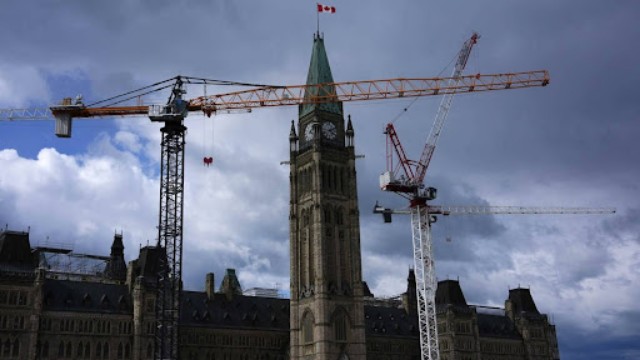
Former President Donald Trump waves to the crowd after giving a speech at the U.S. Steel plant in West Mifflin, Pennsylvania, on Friday, May 30, 2025. (AP Photo/David Dermer)
Starting today, steel and aluminum coming into the United States will be taxed at a much higher rate. President Donald Trump has followed through on his plan to double the tariffs on these metals, bumping them from 25 per cent to 50 per cent. He signed an executive order on Tuesday to make it official.
Trump says the move is aimed at protecting the country’s security and giving American industries a better chance to compete. According to the White House, the decision will strengthen the economy by supporting domestic manufacturers and reducing reliance on foreign metal.
However, this sharp increase in tariffs has drawn heavy criticism. Canadian Prime Minister Mark Carney called the new rates "unlawful and unfair." He said Canada is pushing hard to get the tariffs lifted as part of ongoing talks for a new trade and security agreement with the United States.
Interestingly, not all countries are being hit with the increased rate. Imports from the United Kingdom will still be taxed at the original 25 per cent level. The Trump administration says it’s working out the terms of a trade deal with the UK, which is why they’ve been spared the higher rate — at least for now.
This policy change comes with serious consequences. About 25 per cent of the steel used in the U.S. is imported, and Canada supplies the largest share of that. Experts say Canadian companies will suffer the most under the new rule. Many in the steel and aluminum industries fear this could lead to job losses, factory slowdowns, and shrinking profits across the sector.
Economists are also sounding the alarm. They warn that the 50 per cent tariffs could drive up prices in the U.S. for everything from cars to appliances — products that depend heavily on steel and aluminum. These rising costs might end up being passed along to everyday consumers, making it harder for families and businesses already struggling with inflation.
The Canadian government is continuing talks with U.S. officials in hopes of getting the new rates reversed. Meanwhile, both governments are under pressure from industry leaders to find a compromise before the situation worsens.
As the debate over tariffs heats up, one thing is clear — this decision is set to shake up trade relationships, business operations, and even household budgets across North America.















